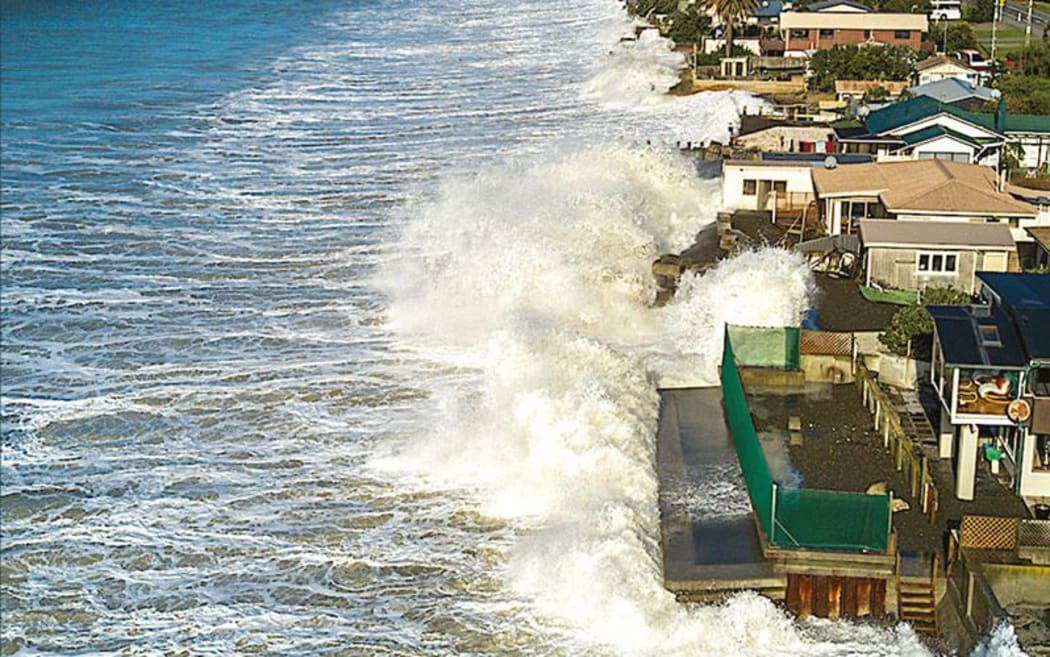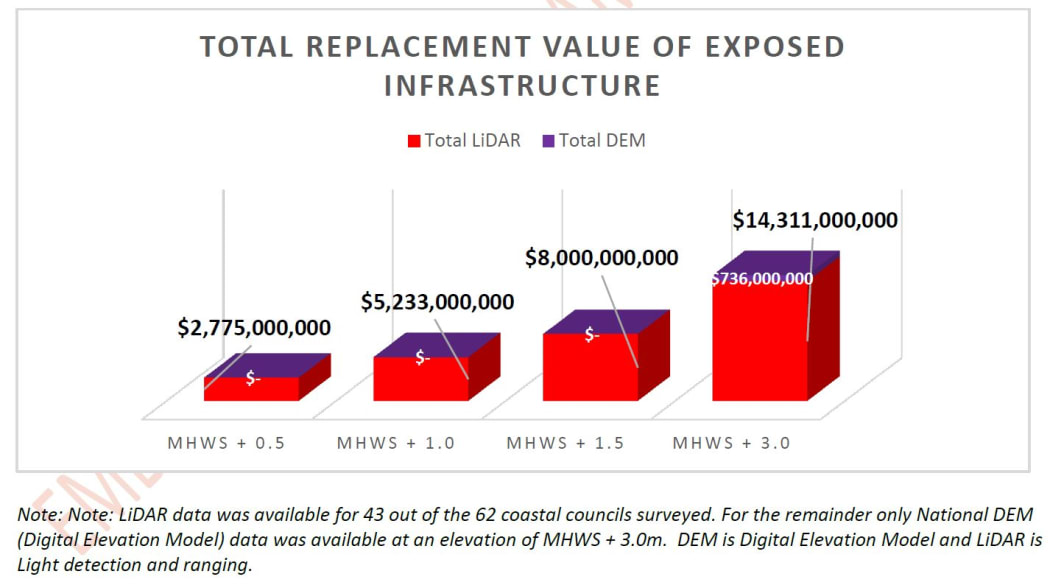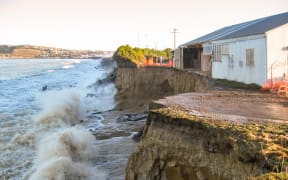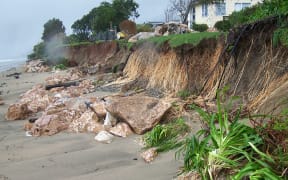Up to $14 billion worth of council-owned assets across New Zealand - not to mention the costs to central government and private interests - are at risk from sea level rise, according to the first report linking council infrastructure and climate data.

The image from the cover of the book, the Invading Sea. Photo: Cuba Press
The report by Local Government New Zealand (LGNZ) is the first of its kind, showing how much infrastructure - including water and road infrastructure, buildings and facilities - would be exposed if the sea level rises by 1.5 metres.
Water infrastructure was the most costly to replace nationally, exceeding the total cost of building and roading infrastructure at risk. At sea-level rise of 1.5m, the estimated cost of replacement is $4bn.
The region projected to be hardest hit by a 1.5m was projected to be Canterbury, with $1.6bn worth of infrastructure at risk.
Auckland followed at $1.4bn and Hawke's Bay close behind on $1.2bn.
The data, compiled by using geographic Niwa projections on sea level rise and council information on infrastructure - was not available for all regions.
No data was provided by local councils for Kaikōura and the Gisborne region. Data on stormwater and Ports of Auckland were not available for the Auckland region.
The accuracy of the data in five regions - West Coast, Southland, Marlborough, Taranaki and Manawatu-Whanganui regions - was lower due to high-resolution data not being available for those areas.
LGNZ president and Dunedin mayor Dave Cull told Morning Report the potential cost could be up to $14bn.
"At only half a metre [sea level rise] there is estimated to be $2.7 billion worth of council-owned infrastructure at risk - and that doesn't count the private buildings, the government buildings, whatever that's on top of that that's being served by that infrastructure.
"It goes right up to at three metres of sea level rise, it's estimated about $14bn of council-owned infrastructure at risk."

Graphic: LGNZ
LGNZ, an association of the local governments of New Zealand, proposed four ways to address the need for adaptation in local communities.
LGNZ proposed that:
- Local government leads a national conversation about how to prepare for rising seas
- A climate change fund be established to help figure out how to pay for adaptation
- A local government risk agency be set up to support councils and make sure planning and decisions were consistent
- A national master plan to help councils work together to prepare
It said councils and communities would not have the money needed to adapt to climate change. Central and local government needed to work together.
Mr Cull told Morning Report there were measures that could be put in place.
"What we're saying is we need to be thinking about those things now because although the cost of adaptation measures - whether it's sea walls or retreat or whatever - although the cost of that is huge, the cost of doing nothing is a quantum leap above that again.
He said the decision on whether to have communities retreat from the rising seas or build adaptation measures like sea walls would have be taken on a case by case basis, however.
"In some places that will inevitably happen, but it would be foolish to wait until that sort of impact were imminent ... when you could have taken adaptation measures earlier and prevented that.
"There are places in the country now where because of climate change impacts people are not able to live where they used to live.
He said Hawke's Bay was well ahead of other places in looking at its options, and there were also serious risks on the West Coast.
Indeed, while the area expects to be one of the first affected by climate change, the West Coast Regional Council recently rejected the government's climate change mitigation bill.
"I need to make a distinction, what the West Coast Regional Council are saying is that they're not prepared to get behind mitigation measures to reduce their carbon footprint until they're convinced that the changes that are happening is human induced.
"The West Coast is clearly at risk from changes that are happening now - everyone else believes that it's climate change induced.
He admitted it was a "somewhat inconsistent" position for the council to be on one hand refusing to mitigate the causes of climate change while on the other hand asking for support and funding to allow it to adapt to the effects.
"That certainly seems to be a somewhat inconsistent position to take ... it's not my job to tell my member councils what to do," he said.
"We may very well talk to them about it but it's not, as I say, a membership organisation's job to be telling its members what to do no matter how inconsistent we might think it is.
"What we're talking about here is what will need to be done to prevent the risk escalating to council-owned infrastructure all over the country," he said.
The report said that until now, councils had a poor understanding of the type, amount, and replacement value of local government-owned infrastructure, and where adaptation planning should be prioritised.
Read the full report:




